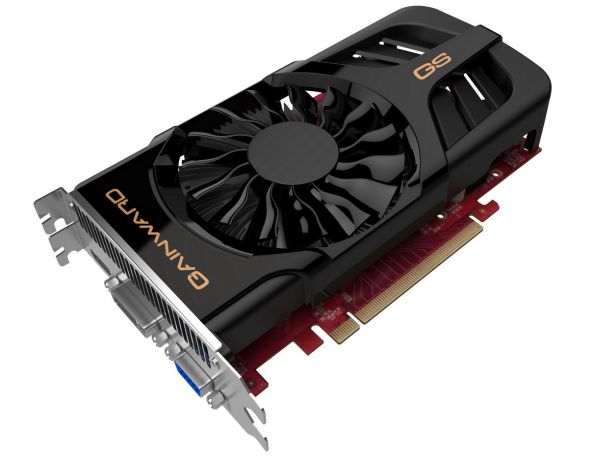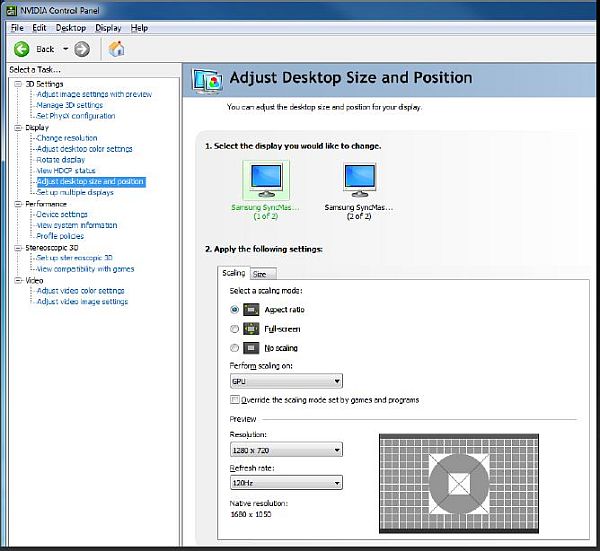Index


Review: Where did the 'Ti' go?
Nvidia’s Geforce GTX 560 launches today. Note that you shouldn’t confuse it with the GTX 560 Ti that launched on January 25th, as the GTX 560 is here to fill the gap between GTX 560 Ti and GTX 460 cards. GTX 560 owners, however, can expect some nice performance at 1920x1080.
We thought that Nvidia will retire its GTX 460 (based on GF104), but it seems we’ll have to wait a little while more until that happens. As you can see, the GTX 460 is listed in Nvidia’s GTX 560 presentation slides and it still coexists with the GTX 500 series. 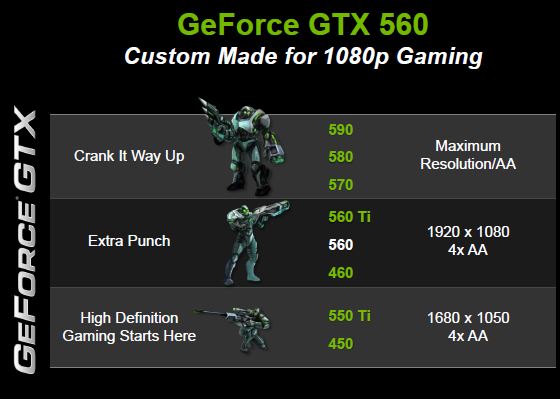
Note that the GF114 is a derivation of GF104. However, the GF114 packs a few improvements inherited from the GF110. The GF114 GPU received plenty of positive acclaim so far and we’ve seen that the card boasts nice performance-per-clock ratio as well. GTX 560 and GTX 560 Ti are based on the GF114, although the new card is slower due to some disabling within the GPU.
Gainward GTX 560 Phantom comes overclocked. However, the overclock is relatively small (13MHz for the GPU and 10MHz for the memory) as you can see from the GPUZ shot below.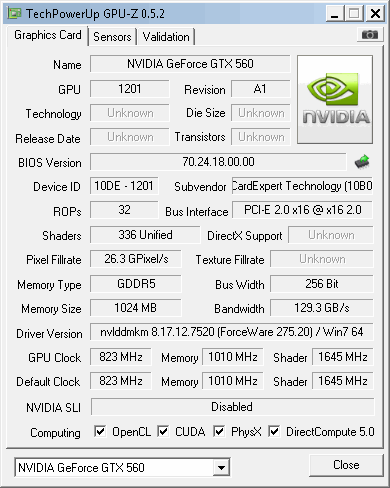
The GTX 560 Phantom card is a part of Gainward’s Phantom line, aimed at those who like their cooling effective but silent. GTX 580, GTX 570 and GTX 560 Ti already received Gainward’s Phantom treatment, so we guess it’s expected to see the GTX 560 get the same remake.
The reference GTX 560’s dual slot cooling is used on many other Nvidia’s cards, including the GTX 560 Ti. The cooling has already proven its worth and it should take care of GTX 560 cards quite nicely, as well as be quiet while doing so.
Since GTX 560 and GTX 560 Ti cards use the same PCB, partners won’t have trouble migrating their existing GTX 560 Ti specialized coolers and strap them on GTX 560; in fact, Gainward already did just that.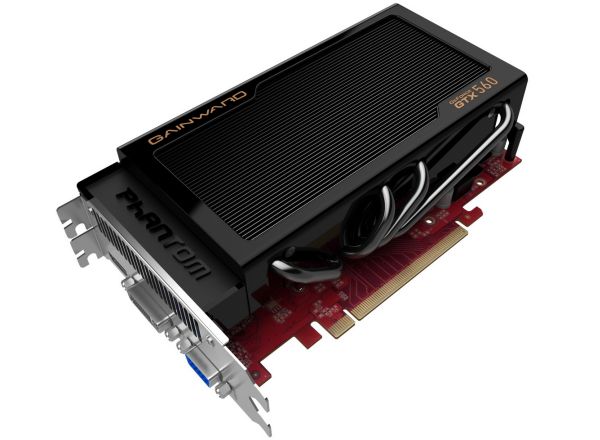
The GTX 560 Phantom’s packaging is similar to that of GTX 560 Ti Phantom card. Nvidia really made the design part easy for its partners, as all they had to do was erase the 'Ti's and ship them away.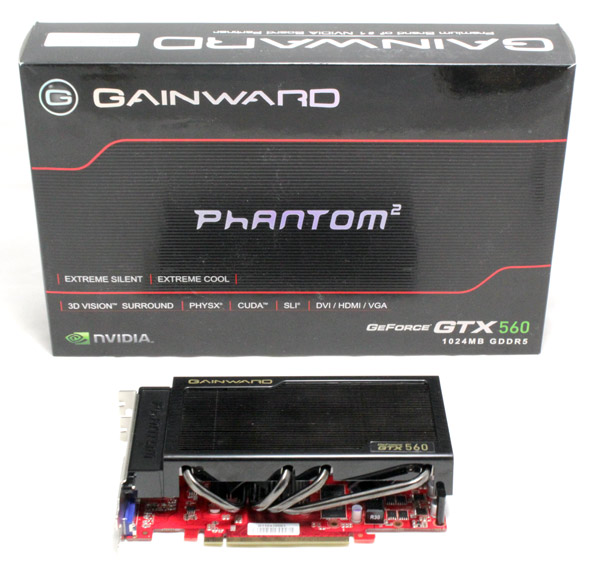
Below you see the GTX 560 Ti Phantom packaging.
Inside you'll find a 6-pin connector, user's manual and driver CD. There are no video converters because the card comes with three different video outs by default.
Gainward GTX 560 Phantom is almost 19cm long and it sports high performance Phantom series cooler.
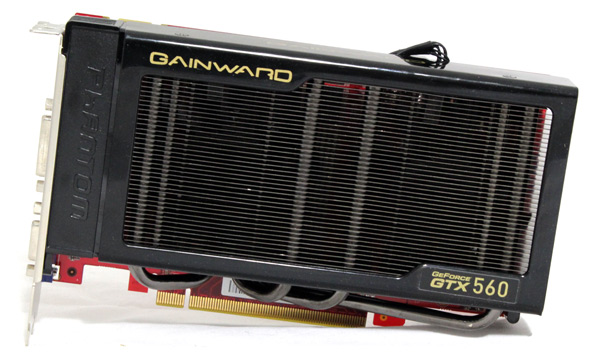
Gainward's new card is 2.5 slots wide whereas the reference card is two slots wide.

Phantom cooler comes with 4 heatpipes and two 80mm fans. The fans are placed inside the large heatsink so a glance at the card would suggest that the card is passively cooled.

The fans are very quiet so we guess there would be no harm in assuming that.
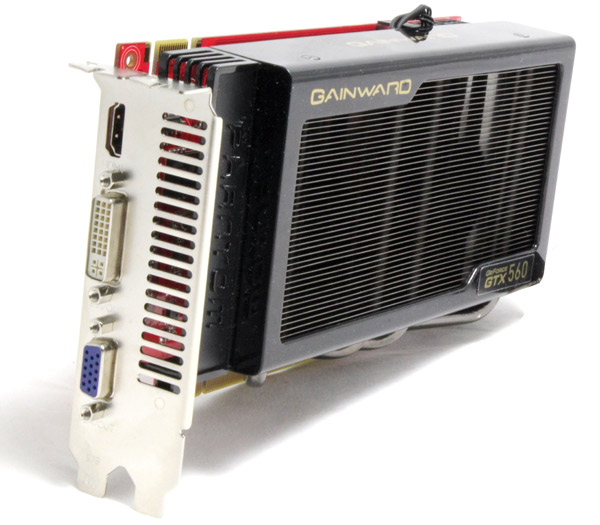
As far as video outs go, Gainward decided to go with one dual link DVI, HDMI and VGA out. Note that only two video outs can be used simultaneously.
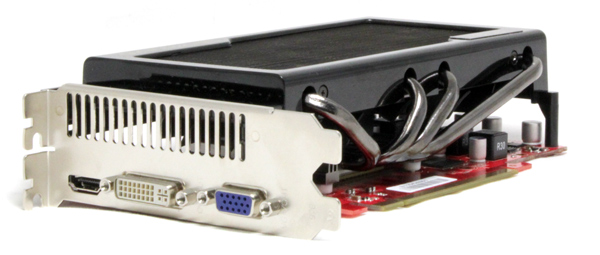
Reference GTX 560 card comes with two dual-link DVIs and a mini HDMI connector so if you're keen on using the standard HDMI, you'll need the mini-HDMI-to-HDMI adapter.

GTX 560 comes with one SLI connector. This means you can combine up to two GTX 560 cards in SLI mode for improved performance or image quality settings.
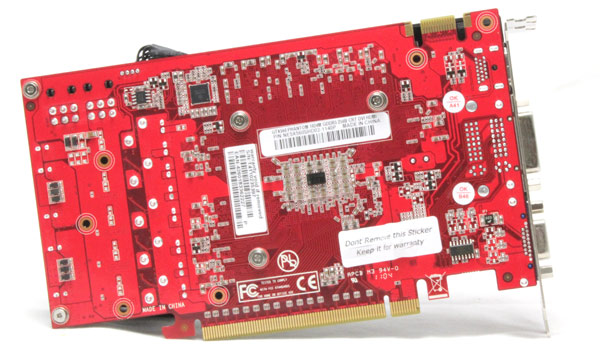
The card has two 6-pin PCI-Express power connectors.
The Gainward Geforce GTX 560 Phantom uses 1024 MB video memory. The chips used are K4G10325FE-HC04 parts from Samsung. They are specified to run at 1250 MHz (5000 MHz GDDR5 effective).
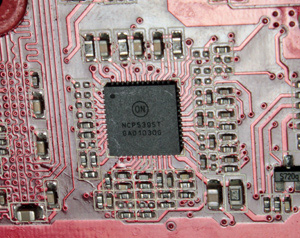
OnSemi's NCP5395T is a cost-effective voltage regulator. It does not offer I2C voltage control, but VID based control is available through API in NVIDIA's driver.
Along with the GTX 560, the slower version of the GTX 560 Ti, Nvidia launched its driver version 275. It is said that the new v275.20 driver (compared to v270.51) improves the GTX 560 scores by up to 15%. The improvements were reported for newer titles such as Crysis 2 (6%), Bulletstorm (15%) and Portal 2 (8%). This extra punch should make 1080p gaming a breeze with the GTX 560.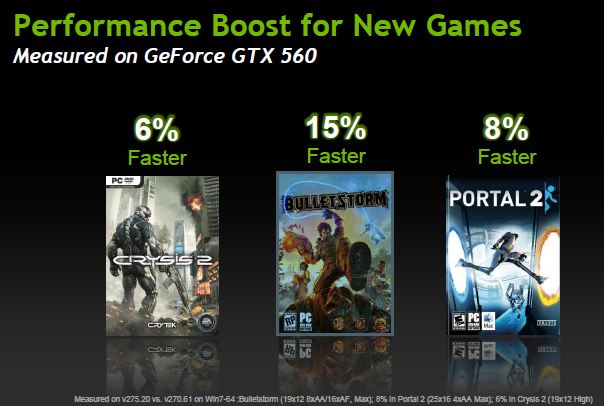
The new driver brings significant improvements. The automatic update now includes SLI and AA profiles, which are pretty important for SLI system owners who want to play some newly launched titles that don’t have SLI profiles included in the latest driver.
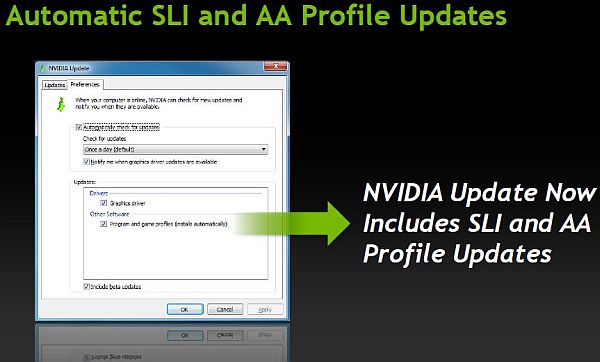
3D Vision Profile update is planned for the upcoming period.
The driver’s user interface is now richer by another preview window. Scaling experience for displays is also improved; it should work flawlessly for all displays (including VGA or HDMI connections). If you’re using Windows 7, it is possible to override the scaling mode set by gamers and programs.
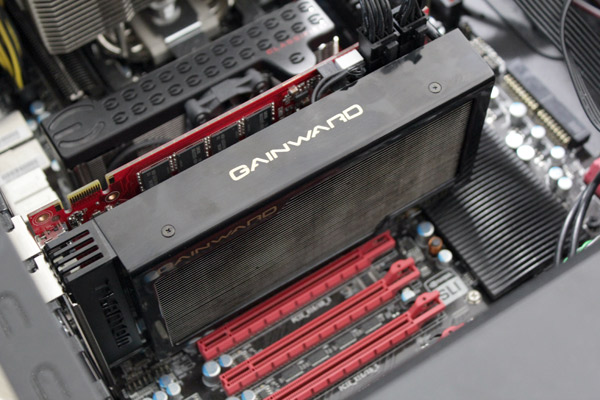
Motherboard: EVGA 4xSLI
CPU: Core i7 965 XE (Intel EIST and Vdrop enabled)
Memory: 6GB Corsair Dominator 12800 7-7-7-24
Harddisk: OCZ Vertex 2 100 GB
Power Supply: CoolerMaster Silent Pro Gold 800W
Case: CoolerMaster HAF X
Fan Controler: Kaze Master Pro 5.25"
Operating System: Win7 64-bit
Nvidia 275.20_desktop_win7_winvista_64bit
AMD 11.5 CCC
3DMark 2011
3DMark 2011 is the new Futuremark synthetic test that has proven to be pretty realistic when it comes to estimating the graphics cards' punch. The benchmark rated out test subject, the GTX 560 Phantom, as slower than GTX 560 Ti by 8-12 percent. Our gaming tests will reveal that 3DMark 2011 was right on the money. Also, we see that the GTX 560 Phantom is up to 17-21 faster than the GTX 460 1GB.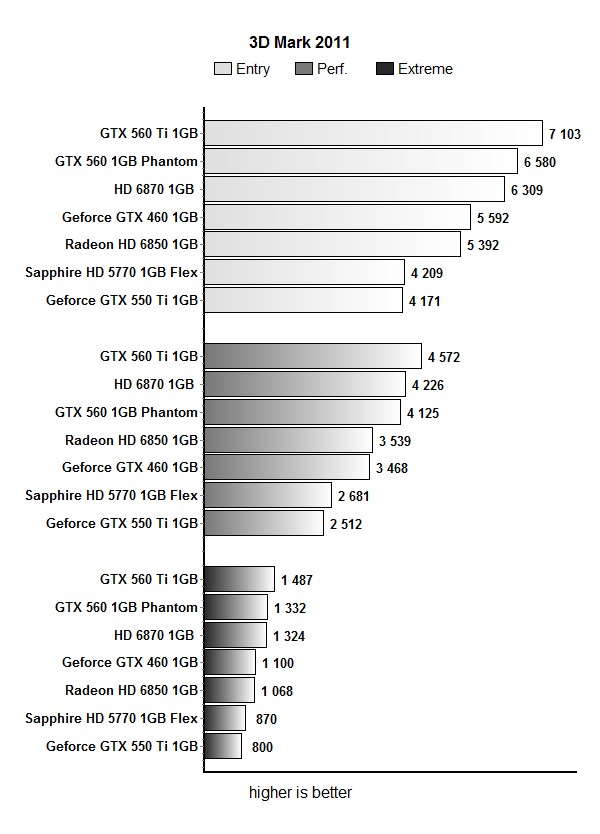
Aliens vs Predator
At 1920x1080, the GTX 560 Phantom runs slower than the GTX 560 Ti by up to 10 percent. Upping the resolution to 2560x1600 resulted in the GTX 560 Ti coming out on top by 13.4 percent.
Overall, GTX 560 is faster than GTX 460 by 18-20 percent.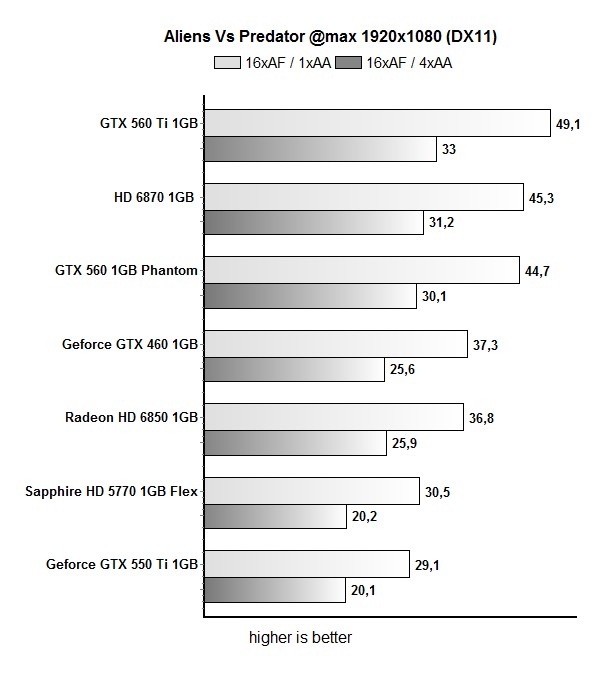

Dirt 2
At 1920x1080, GTX 560 Phantom is slower than the GTX 560 Ti by up to 10 percent, and the difference increases to 12 percent at 2560x1600.
Overall, the GTX 560 Phantom beats the GTX 460 by about 19%.
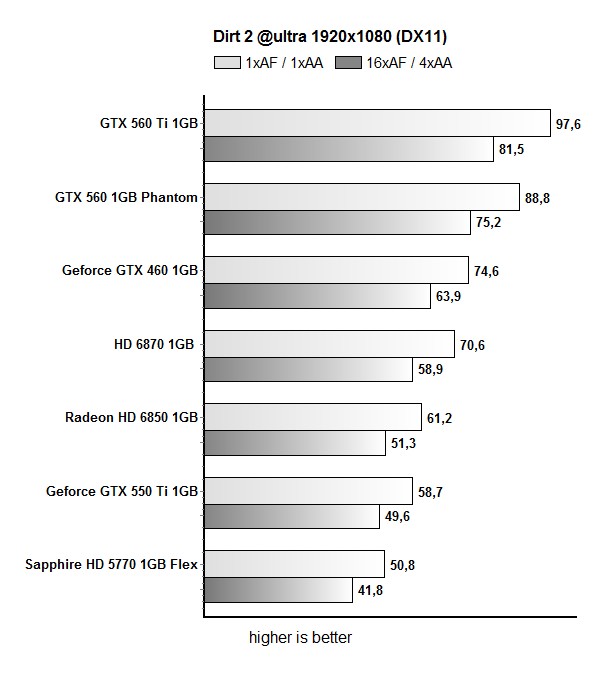
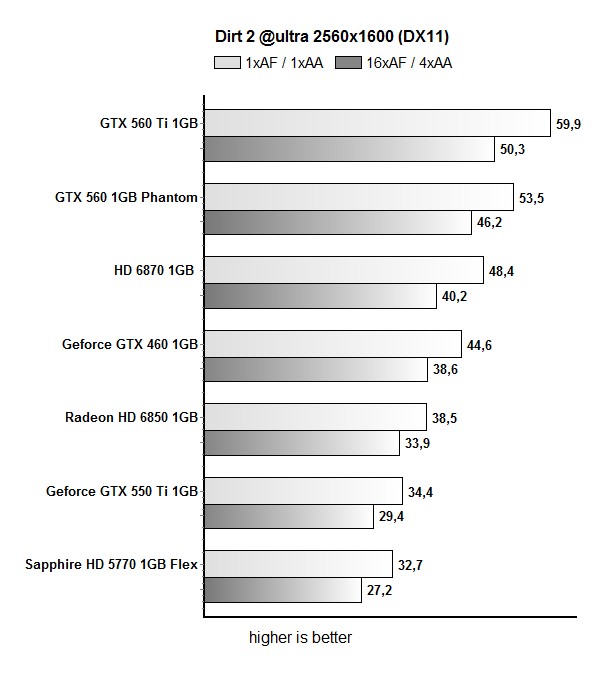
Metro 2033
The GTX 560 Phantom allowed for pleasant 1920x1080 gaming in AvP and Dirt 2, even with maximum graphics settings, but Metro 2033 reminded that it's still a mid-range card. After all, maximum graphics settings in this game (without PhysX) are too much to bear for some high end cards, let alone midrange. However, that's not to say that gaming at 1080p with the GTX 560 is impossible - you'll just need to decrease detail settings.
At 1920x1080 and no AA, the GTX 560 Phantom lags behind the GTX 560 Ti by 8.6 percent. Turning on AA, however, shortened the gap to 6.6 percent. The GTX 560 Phantom beats the GTX 460 by up to 16%.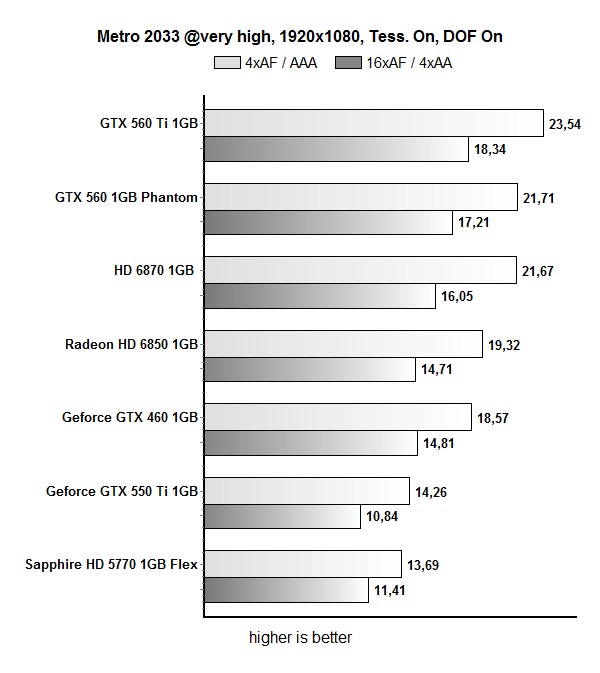
Unigine Heaven v2.1
TessMark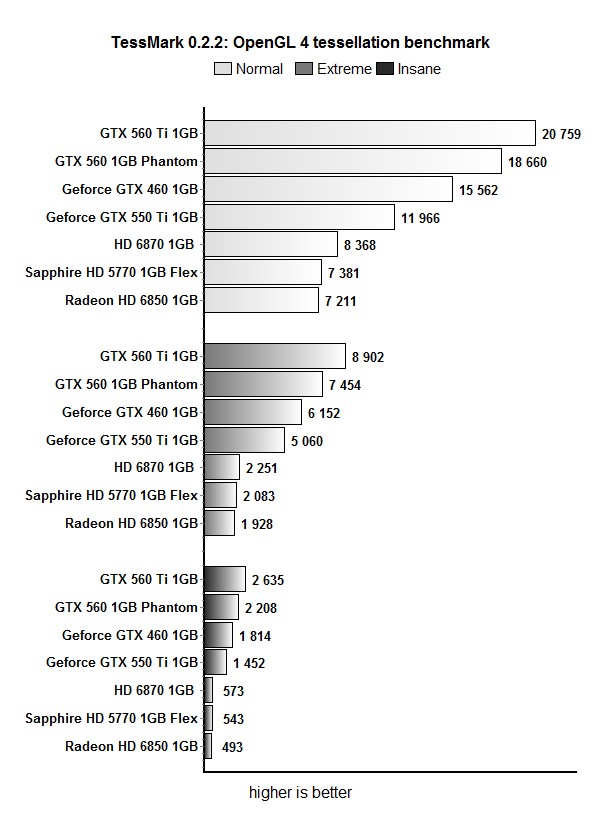
Overclocking
Overclocking the GF114 should not be a problem, regardless of whether it’s reference or specially designed GTX 560 Ti or GTX 560. Most GTX 560 Ti cards will run stable at 920+MHz. We tested the first GTX 560 so far, Gainward's GTX 560 Phantom. Compared to Gainward GTX 560 Ti, the new card turned out to be a better overclocker.
Gainward’s cooling provides a nice foundation for a healthy overclock and we got the following results. We managed to push the GTX 560 Ti's GPU from 835MHz to 930MHz, and the card remained quiet throughout. GTX 560 Phantom was quiet as well, despite achieving even better OC results - we pushed the GPU to 945MHz.
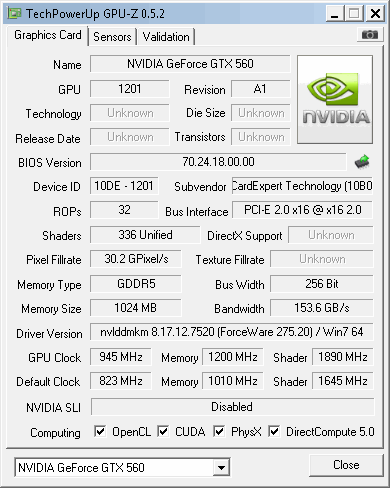
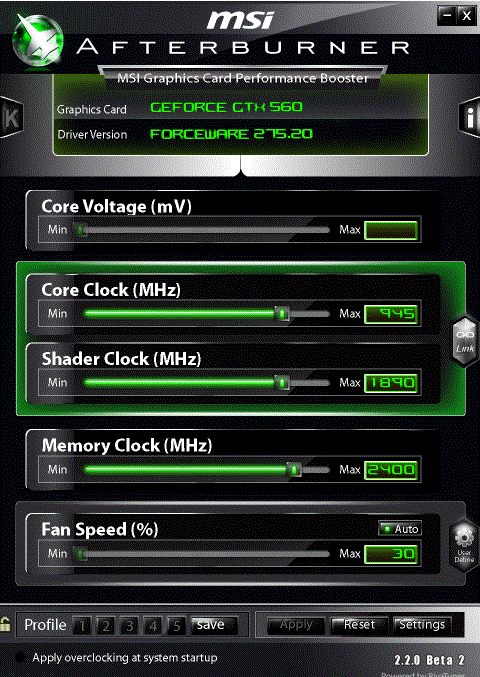
Noise is not an issue. In fact, this is one of the quietest cards we've tested. Temperatures are within normal limits as well, as you can see from the pictures below.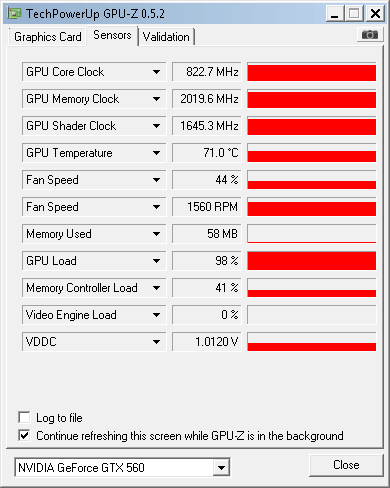
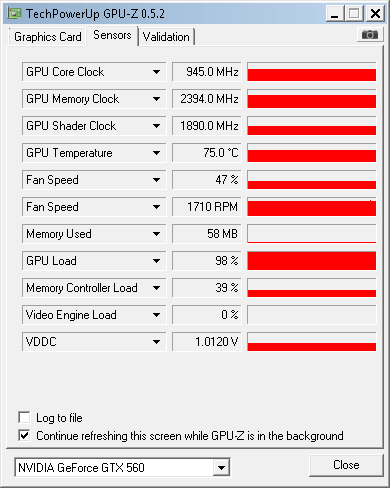
Our testing reveals that the new card performs slower than the GTX 560 Ti by up to 13 percent and faster than the GTX 460 by up to 21 percent. This suggest smooth gaming at 19x12 and Nvidia classifies the card as custom made for 1080p gaming. GTX 560 cards are priced at €140 before VAT, meaning they’ll be available at about €160-170.
Both cards are based on the GF114 GPU and partners got off light this time as the GPUs are pin compatible. This means that partners can use existing GTX 560 Ti designs and implement them with the GTX 560. Thankfully, Gainward did exactly that with the GTX 560 Phantom. In fact, when we got the card we thought it is GTX 560 Ti Phantom. The difference is evident only on the I/O panel and the number of video outs. The GTX 560 Phantom offers a standard HDMI connector, one dual-link DVI and one VGA. The GTX 560 Ti Phantom, on the other hand, has two dual-link DVIs, one standard HDMI connector and one VGA.
Nvidia did a good job calculating in the performance difference between the GTX 560 Ti and the GTX 560, meaning you’ll get exactly what you pay for. Unfortunately, a glance at the current graphics cards offer makes us wonder whether Nvidia thought about factoring AMD into the equation. For instance, HD 6870 cards go for about 145 euro.
Gainward's GTX 560 Phantom comes with a minimum overclock and the excellent Phantom cooling. We managed to push the GPU to 945MHz and the card remained quiet. If the GTX 560 Phantom doesn't end up pricier than reference cards, then Gainward will definitely have a winner on its hands.
Updated 25.05.2011
Unfortunately, one week after the launch of GTX 560 cards, Gainwar's GTX 560 Phantom card is priced 20 euro higher (€168) than the most affordable GTX 560 (€148?), which is a bit too much to ask solely on the basis of special cooling.
Updated 04.06.2011
Gainwar's GTX 560 Phantom card goes for €162 , here.
Since our today’s test was about Gainward’s card, you can check out the rest of the company’s GTX 560 series offer below.
1) GAINWARD GeForce GTX 560 2048MB
Core Clock 810 MHz
Memory Size 2,048 MB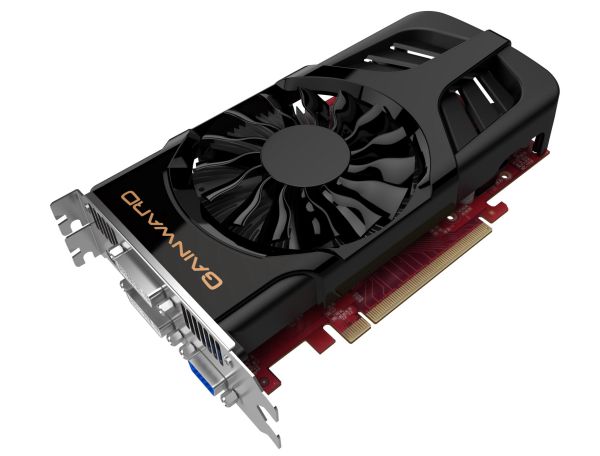
2) GAINWARD GeForce GTX 560 1024MB "Phantom"
Core Clock 822 MHz
Memory Size 1,024 MB
3) GAINWARD GeForce GTX 560 1048MB "Golden-Sample"
Core Clock 822 MHz
Memory Size 1,024 MB